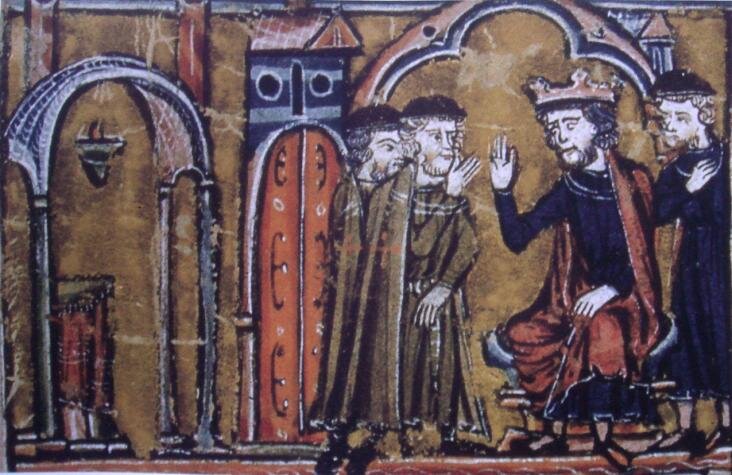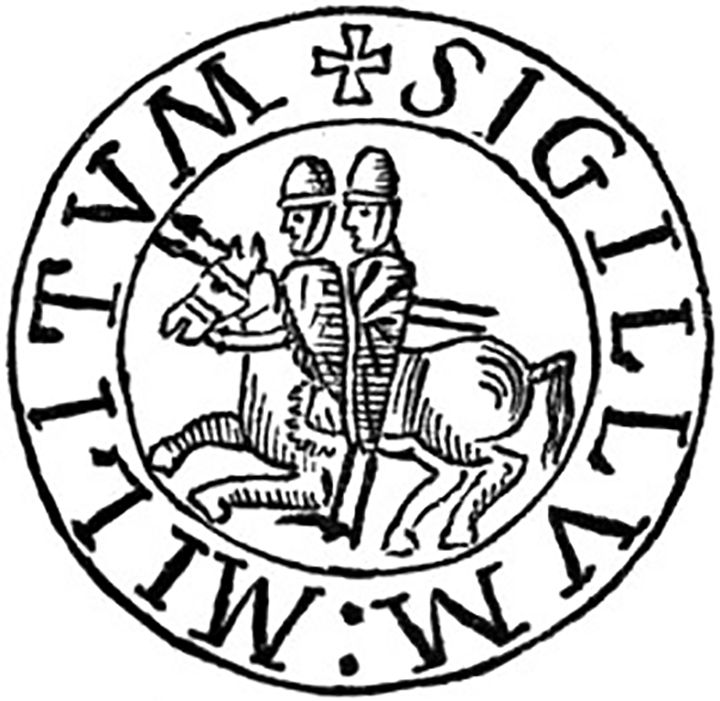By: Erika Schmitt
“I love history, so while the psychological basis of ‘Star Wars’ is mythological, the political and social bases are historical,” George Lucas told the Boston Globe in a 2005 interview.
Obi-Wan Kenobi indelibly captured our imaginations the first time he told audiences about Jedi. He explained, “A young jedi named Darth Vader - who was a pupil of mine, until he turned to evil - helped the Empire hunt down and destroy the Jedi Knights. He betrayed and murdered your father. Now the Jedi are all but extinct. ” Obi-Wan describes the Jedi Knights as guardians of peace and justice in the Old Republic while George Lucas defined them as swordsmen, ambassadors, negotiators, and intergalactic therapists but not strict enforcers. Jedi, though, were not the wholesale creation of Lucas but an amalgamation of different religions, philosophies, and historical groups. George borrowed significantly from the Knights Templar and the samurai of feudal Japan in coming up with the design, philosophy, and concept of the Jedi. We'll examine the samurai's impact on the Jedi in a later article, so for today, let's explore the Knights Templar. How did these military monks inspire the Jedi? Let’s take a look.
The Knights Templar
After the Christians won Jerusalem from the Muslims after the First Crusade in 1099, Christian pilgrims would travel to sacred sites throughout the Holy Lands. It was customary to bring offerings to the shrines one would visit and as such, pilgrims were often victims of vicious attacks by bandits along the route.
In 1119, the French knight, Hughes de Payens and eight of his relatives and acquaintances were given permission by King Baldwin II of Jerusalem to create a monastic order that would protect pilgrims during their travels. The group was given a headquarters located at the Royal Palace on the Temple Mount. The group referred to the location as Solomon’s Temple and selected their name to reflect their new location: the Poor Knights of Christ and the Temple of Solomon, or more simply the Knights Templar.
King Baldwin II assigning Hugh de Payens and Godefroy de Saint-Omer (left) their new headquarters.
The Knights Templar held a reputation of being exceptionally poor but when they were endorsed by Saint Bernard of Clairvaux (popular for founding the Cistercian Monks), that all changed. Becoming the preferred charity in all of Christendom afforded the Knights Templars the acquisition of money, land, businesses, and noble-born sons who were eager to fight in the Crusades. By 1139, Pope Innocent II issued a papal bull (official ruling by a pope) that the Knights Templar could pass between borders freely without the worry of paying taxes or following local laws; they only had to answer to the pope.
The Knights Templar were subjected to a rigorous set of rules. Members were to take an oath of poverty, chastity, and obedience in addition to no drinking, gambling, or swearing. Some of the more important rules included absolute obedience to the Grand Master, no breaking ranks, no charging without permission, do not leave the battlefield, no hunting (except mountain lions to keep pilgrims safe), eat in pairs, how to march to war, no fancy clothes, and individuals cannot have money for themselves, among others. Interestingly, of all the members of the Knights Templar, 90% were noncombatant. Those who were not warriors would support those who were as well as tend to the organization's finances and managing property for absent owners. In fact, another way that the Knights Templar supported pilgrims was to protect their valuables while they were away. By providing the owner a document indicating the value of the goods, the pilgrim could cash the check upon reaching their destination. This early form of banking (and first use of formal checks) saved pilgrims from carrying their valuables or offerings on their person while they traveled and made them less likely to be attacked. With their accumulated wealth, the Knights Templar built castles and cathedrals, had a fleet of ships, manufactured goods for import and export, and even owned the entire island of Cyrus at one point.
Traditional Knights Templar uniforms with the red cross symbolised martyrdom as it was a great honor to die in combat.
The Knights Templar seal of two men sharing one horse emphasized poverty and the buddy system, despite being a rule that warriors were allowed three horses and not allowed to ride together on one horse.
There were many factors which contributed to the decline of Templar popularity but the most notable event was the unification of Islam under Saladin in the mid-12th century. With the Christians no longer ruling Jerusalem, the Knights Templar needed a new job. The order spent the next century shifting their main mission of protecting pilgrims to focusing on their European enterprises. This shift in Templar duties saw a decrease in public support.
Alongside the Knights Templar were other Christian military groups such as the Knights Hospitillers and the Teutonic Knights. In 1305, Pope Clement V invited Grand Master Jacques de Moley of the Knights Templar and Grand Master Fulk de Villaret of the Knights Hospitillers. The purpose of the meeting was to merge the two orders. Despite both men initially turning down the offer, both men eventually agreed and traveled to meet with Pope Clement V in 1307. Jacques de Moley was first to arrive and while waiting for Fulk de Villaret, Pope Clement V discussed some recent accusations made by a former Templar that were being reviewed by King Philip IV of France and his advisors. Seeking a more thorough investigation, Clement requested assistance from the king who had ulterior motives. Being deeply in debt to the Knights Templar from his war with England, the king of France seized the opportunity to free himself from financial responsibility and arrest the order.
Beginning on 13 October 1307 (one of the suspected inspirations for the superstitious date) de Moley and many other French Templar Knights were arrested. Through torture, the knights confessed to a variety of heretical charges such as spiting on the cross, dening Christ, worshipping idols, encouraging homesexual practices and indecent kissing as well as financial fraud, corruption, and secrecy. Despite no credible evidence, de Moley and several other Templars were burned at the stake. 22 November 1307 a warrant was issued to arrest all remaining Templars and to seize their assets. These Templars were tried but allowed to live out the rest of their days in peace. The Knights Templar were officially dissolved in 1312.
While Jedi Knights are not exactly the same as the Knights Templar, there are definitely some noteworthy similarities. Both orders were famous for their religious warriors who adhered to strict rules that prevented and discouraged marriage to encourage both sets of knights to focus on their respective religions and helping others. A comparison could be made between the buddy system of the Knights Templar and the practice of a Jedi Master training a Padawan. Just like the Templars, Jedi were very much a part of everyday life for thousands of years. In addition, both orders were betrayed by their superiors. Both King Phillip and Darth Sidious were able to destroy the orders they opposed by turning a trusted source of power against them, in the Catholic Church and the Grand Army of the Republic. Both men betrayed and murdered the orders that had previously protected and fought for them, because rather than serve the King or the Chancellor directly, both knightly orders steadfastly served a higher, spiritual calling in The Force and The Church. Alas, though, as far as history can tell: none of the Knights Templar had glowing swords.
If you enjoyed this, please check in next time for our article on feudal Japanese Samurai and how they impacted the look, philosophy, and even name of the Jedi! If you have another topic you'd like to learn about or explore, recommend it! May the Force be With You!




